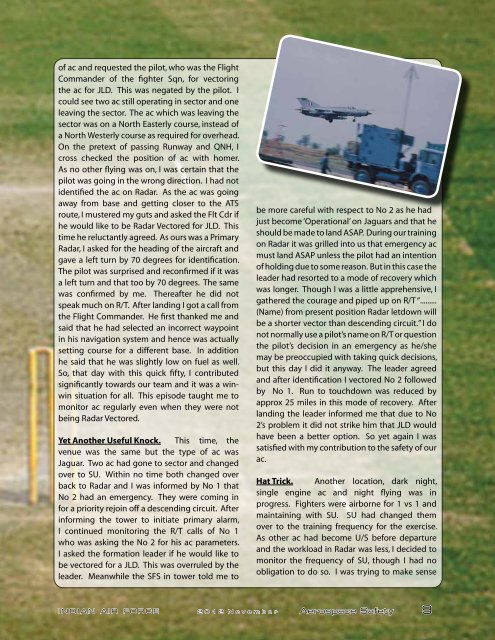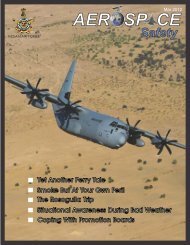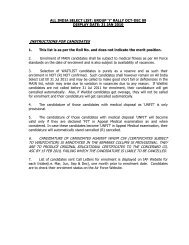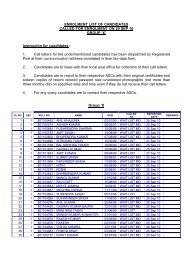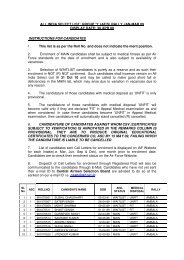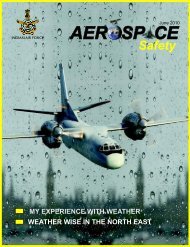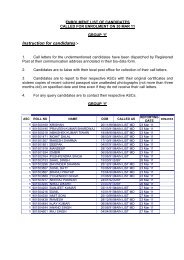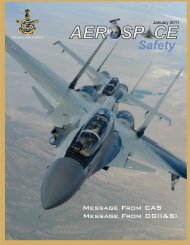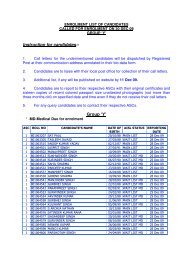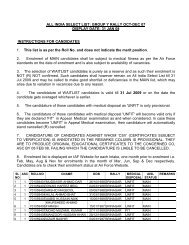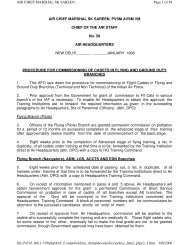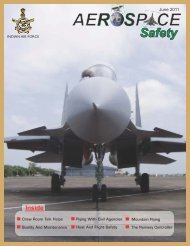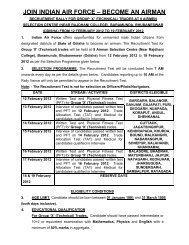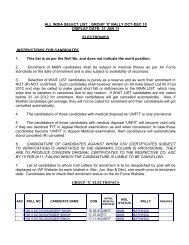November 2012 - Indian Airforce
November 2012 - Indian Airforce
November 2012 - Indian Airforce
Create successful ePaper yourself
Turn your PDF publications into a flip-book with our unique Google optimized e-Paper software.
of ac and requested the pilot, who was the Flight<br />
Commander of the fighter Sqn, for vectoring<br />
the ac for JLD. This was negated by the pilot. I<br />
could see two ac still operating in sector and one<br />
leaving the sector. The ac which was leaving the<br />
sector was on a North Easterly course, instead of<br />
a North Westerly course as required for overhead.<br />
On the pretext of passing Runway and QNH, I<br />
cross checked the position of ac with homer.<br />
As no other flying was on, I was certain that the<br />
pilot was going in the wrong direction. I had not<br />
identified the ac on Radar. As the ac was going<br />
away from base and getting closer to the ATS<br />
route, I mustered my guts and asked the Flt Cdr if<br />
he would like to be Radar Vectored for JLD. This<br />
time he reluctantly agreed. As ours was a Primary<br />
Radar, I asked for the heading of the aircraft and<br />
gave a left turn by 70 degrees for identification.<br />
The pilot was surprised and reconfirmed if it was<br />
a left turn and that too by 70 degrees. The same<br />
was confirmed by me. Thereafter he did not<br />
speak much on R/T. After landing I got a call from<br />
the Flight Commander. He first thanked me and<br />
said that he had selected an incorrect waypoint<br />
in his navigation system and hence was actually<br />
setting course for a different base. In addition<br />
he said that he was slightly low on fuel as well.<br />
So, that day with this quick fifty, I contributed<br />
significantly towards our team and it was a winwin<br />
situation for all. This episode taught me to<br />
monitor ac regularly even when they were not<br />
being Radar Vectored.<br />
Yet Another Useful Knock. This time, the<br />
venue was the same but the type of ac was<br />
Jaguar. Two ac had gone to sector and changed<br />
over to SU. Within no time both changed over<br />
back to Radar and I was informed by No 1 that<br />
No 2 had an emergency. They were coming in<br />
for a priority rejoin off a descending circuit. After<br />
informing the tower to initiate primary alarm,<br />
I continued monitoring the R/T calls of No 1<br />
who was asking the No 2 for his ac parameters.<br />
I asked the formation leader if he would like to<br />
be vectored for a JLD. This was overruled by the<br />
leader. Meanwhile the SFS in tower told me to<br />
be more careful with respect to No 2 as he had<br />
just become ‘Operational’ on Jaguars and that he<br />
should be made to land ASAP. During our training<br />
on Radar it was grilled into us that emergency ac<br />
must land ASAP unless the pilot had an intention<br />
of holding due to some reason. But in this case the<br />
leader had resorted to a mode of recovery which<br />
was longer. Though I was a little apprehensive, I<br />
gathered the courage and piped up on R/T “.........<br />
(Name) from present position Radar letdown will<br />
be a shorter vector than descending circuit.” I do<br />
not normally use a pilot’s name on R/T or question<br />
the pilot’s decision in an emergency as he/she<br />
may be preoccupied with taking quick decisions,<br />
but this day I did it anyway. The leader agreed<br />
and after identification I vectored No 2 followed<br />
by No 1. Run to touchdown was reduced by<br />
approx 25 miles in this mode of recovery. After<br />
landing the leader informed me that due to No<br />
2’s problem it did not strike him that JLD would<br />
have been a better option. So yet again I was<br />
satisfied with my contribution to the safety of our<br />
ac.<br />
Hat Trick. Another location, dark night,<br />
single engine ac and night flying was in<br />
progress. Fighters were airborne for 1 vs 1 and<br />
maintaining with SU. SU had changed them<br />
over to the training frequency for the exercise.<br />
As other ac had become U/S before departure<br />
and the workload in Radar was less, I decided to<br />
monitor the frequency of SU, though I had no<br />
obligation to do so. I was trying to make sense<br />
INDIAN AIR FORCE 2 0 1 2 N o v e m b e r Aerospace Safety 9


